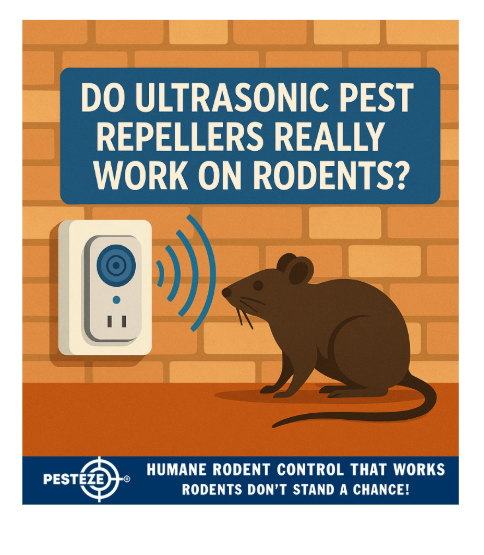DO ULTRASONIC PEST REPELLERS REALLY WORK ON RODENTS?

DO ULTRASONIC PEST REPELLERS REALLY WORK ON RODENTS?
SUMMARY
Ultrasonic pest repellers claim to drive away rodents using high-frequency sound waves. But how effective are they really? This guide explores the science behind ultrasonic devices, what research shows, and whether they’re a reliable long-term rodent solution.
FEATURES
• Non-Toxic Solution: Uses sound instead of chemicals or traps
• Easy Plug-and-Play Use: Requires no setup or maintenance
• Varied Frequency Emissions: Targets pests using sound beyond human hearing
• Safe for Humans and Pets: Doesn’t affect dogs, cats, or people
• Effectiveness Over Time: Initial impact may decrease as rodents adapt
• Supplemental Use Recommended: Works best alongside other control methods
DESCRIPTION
Ultrasonic pest repellers are small electronic devices designed to emit high-frequency sound waves that are meant to be intolerable to pests like mice and rats. These devices are marketed as a clean, humane alternative to traps or poisons—but the big question remains: do they really work?
The basic idea is that rodents are sensitive to ultrasonic frequencies—typically above 20 kHz—that humans can’t hear. When the device is plugged into an outlet, it emits sound waves that are supposed to disrupt the rodents’ communication, movement, and nesting behavior, encouraging them to flee the area.
While this sounds promising in theory, the reality is more complicated. Scientific studies have produced mixed results. Some lab-based tests showed that rodents initially react to the sound by avoiding the area, but this reaction often fades after a few days or weeks as the animals become accustomed to the noise. In real-world home environments, where food and shelter are plentiful, the deterrent effect may be even weaker.
Another limitation is that ultrasonic waves don’t travel well through walls or furniture. That means a single device might not cover your entire home or even one large room. You may need multiple units, positioned strategically, to have any noticeable impact.
Ultrasonic repellers are not harmful to humans or pets like dogs and cats. However, they may be annoying to small animals like hamsters or guinea pigs, so placement matters if you own rodents as pets.
Ultimately, while ultrasonic pest repellers can be part of your rodent control strategy, they shouldn’t be relied on as a standalone solution. For best results, use them in conjunction with proper sanitation, sealing entry points, and traditional traps or repellents.
- Saharsh Bansal


Comments 0